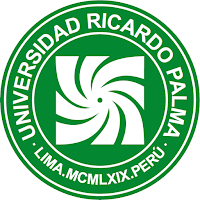Reflections on the topic of the angel of the home in Adelaida, a character in Fabla salvaje (1923)
Reflections on the topic of the angel of the home in Adelaida, a character in Fabla salvaje (1923) Réflexions sur le thème de l’ange du foyer chez Adelaida, personnage de Fabla salvaje (1923)
Article Sidebar
Main Article Content
Gabriela Isabel Cordero San Martin
Abstract
César Vallejo is one of the most representative figures of Peruvian literature and his works have been approached from different perspectives that have been debated until today. Thus, the novel Fabla salvaje, despite its short length, is a complex text that has been read mainly as a representation of identity conflict, dementia or masculinity. In view of this predominance, we consider that an approach to the female character in the novel is necessary in order to generate a reading that dialogues with other aesthetic proposals close to the work. In this sense, the present work will dialogue with the nineteenthcentury cliché of the «angel of the home», which is present in pictorial and literary art and which constitutes a stereotype of the role of women in society. The aim is to recognise the differences and similarities in the conformation of this cliché in Adelaide and Lucia, characters in Fabla salvaje and Aves sin nido, respectively.
Article level metrics
Downloads
Metrics
Article Details

This work is licensed under a Creative Commons Attribution 4.0 International License.
La revista utiliza una licencia Creative Commons para mostrar a los lectores y a los usuarios cómo se pueden utilizar los contenidos publicados.
Los contenidos publicados en la revista están bajo una licencia CC-BY 4.0, la cual permite:
- Compartir, copiar y redistribuir el material en cualquier medio o formato.
- Adaptar, remezclar, transformar y construir a partir del material para cualquier propósito, incluso comercialmente.
Bajo los siguientes términos:
- Atribución. Usted debe dar crédito de manera adecuada, brindar un enlace a la licencia, e indicar si se han realizado cambios. Puede hacerlo en cualquier forma razonable, pero no de forma tal que sugiera que usted o su uso tienen el apoyo de la licenciante.
La información de licencia se muestra e incrusta en las páginas de artículos y en ficheros de texto completo como sigue:
«Este obra está bajo una licencia de Creative Commons Reconocimiento 4.0 Internacional».
Bermúdez, I. C. (2008). El ángel del hogar: una aplicación de la semántica liberal a las mujeres en el siglo xix andino. Historia y Espacio, 4(30). https://doi.org/10.25100/hye.v4i30.1671
Cantero, M. A. (2007). De «perfecta casada» a «ángel del hogar» o la construcción del arquetipo femenino en el xix. Tonos. Revista Electrónica de Estudios Filosóficos, (14). https://www.um.es/tonosdigital/znum14/secciones/estudios¬2¬casada.htm
Ferreira, C. (2020). En torno a Fabla salvaje de César Vallejo. En C. Vallejo, Fabla salvaje (pp. vii-xv). Fondo Editorial de la Universidad Ricardo Palma.
García, M. L. (2008). Lo inadmisible y retazos fantásticos en la narrativa vallejiana. ConNotas. Revista de Crítica y Teoría Literaria, 6(11), 199¬210. https://connotas.unison.mx/index.php/critlit/article/view/173
León, Fray L. de. (2003). La perfecta casada. Biblioteca Virtual Miguel de Cervantes. https://www.cervantesvirtual.com/nd/ark:/59851/bmc0p0w9
Matto de Turner, C. (1994). Aves sin nido. Biblioteca Ayacucho.
Mazzotti, J. A. (2021). Fabla salvaje o el «otro yo» de la peruanidad. El Jardín de los Poetas, 7(13), 189¬207. https://fh.mdp.edu.ar/revistas/index.php/eljardindelospoetas/article/view/5777
Medina, S. (2013). El otro o la presencia del miedo: una aproximación al tema del doble en Fabla salvaje de César Vallejo. Espergesia, 1(1), 45¬53.
Muñoz¬Díaz, J. (2021). Entre lo gótico y lo pedagógico: la crisis de la masculinidad del cholo en Fabla salvaje. Archivo Vallejo, 4(8), 59¬82. https://doi.org/10.31381/archivoVallejo.v4n8.5222
Peluffo, A. (2004). Bajo las alas del ángel de caridad: indigenismo y beneficencia en el Perú republicano. Revista Iberoamericana, 70(206), 103¬115. http://dx.doi.org/10.5195/reviberoamer.2004.5586
Torres¬Pou, J. (1990). Clorinda Matto de Turner y el ángel del hogar. Revista Hispánica Moderna, 43(1), 3¬15. http://www.jstor.org/stable/30203235
Valenzuela, J. (2022). Subjetividad y animalidad en Fabla salvaje de César Vallejo. Anales de Literatura Hispanoamericana, 51, 149¬157. https://doi.org/10.5209/alhi.85131
Vallejo, C. (2020 [1923]). Fabla salvaje [edición facsimilar]. Fondo Editorial de la Universidad Ricardo Palma.










